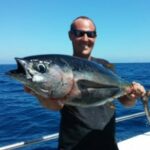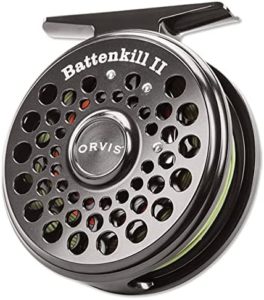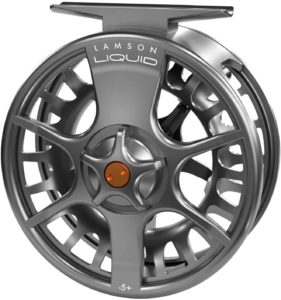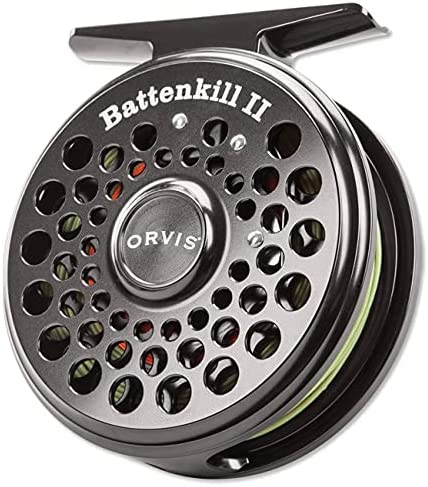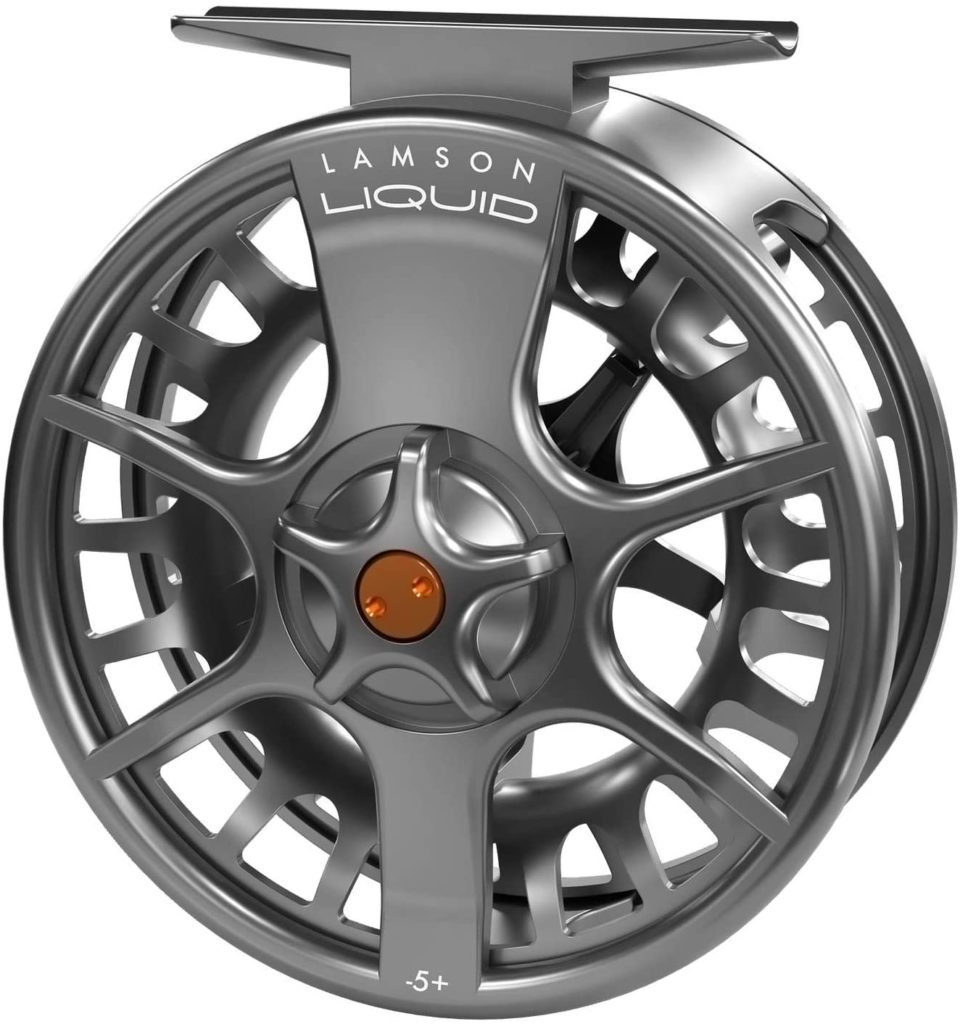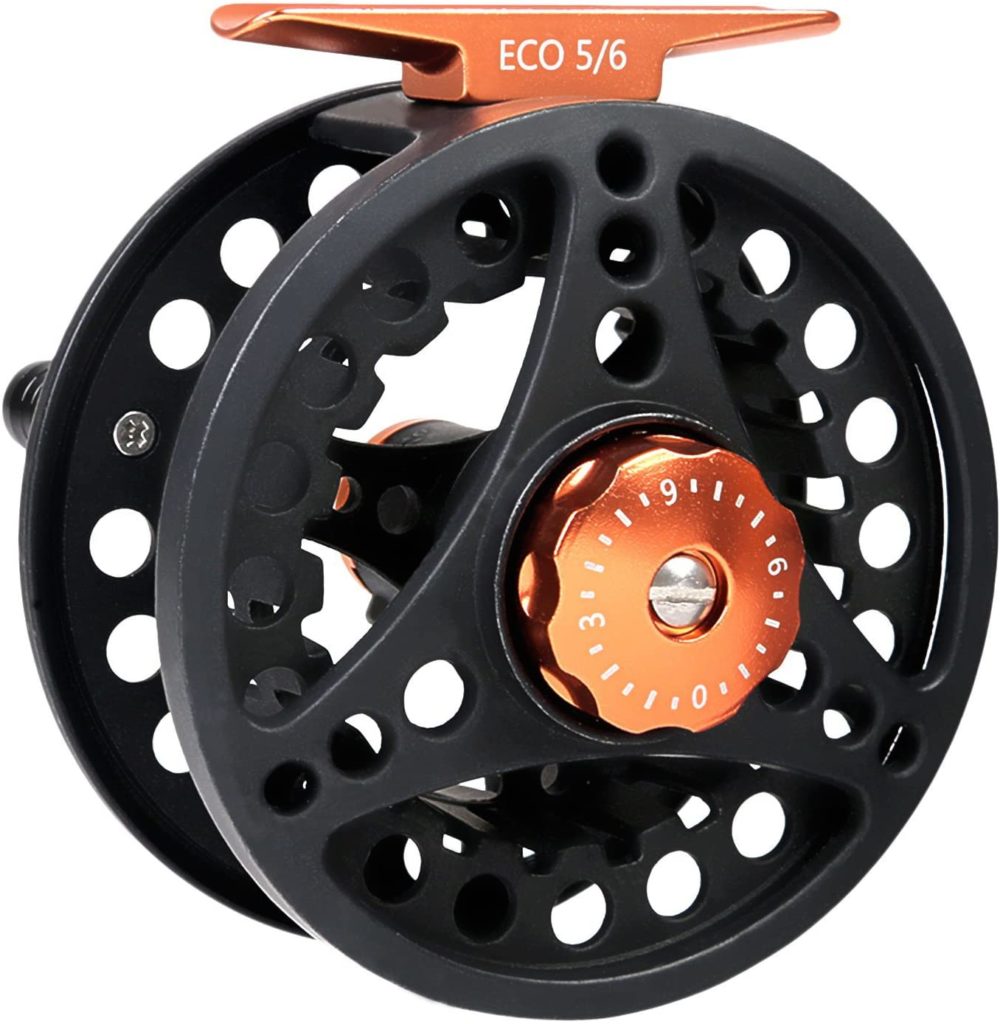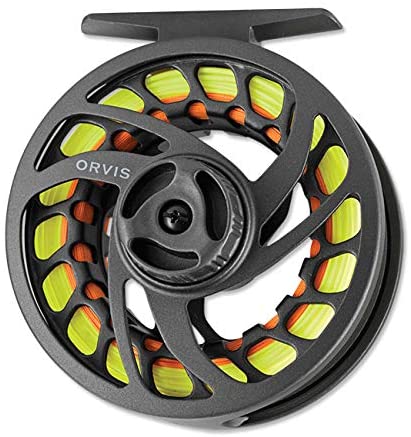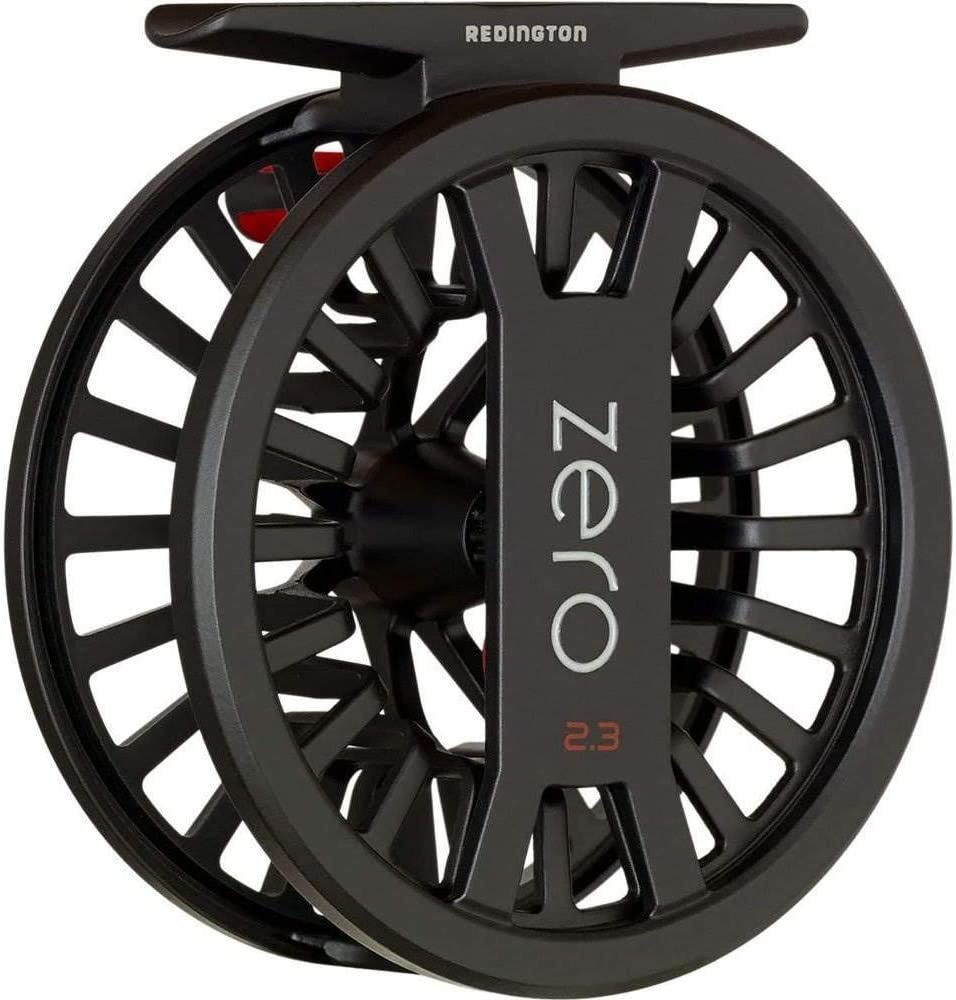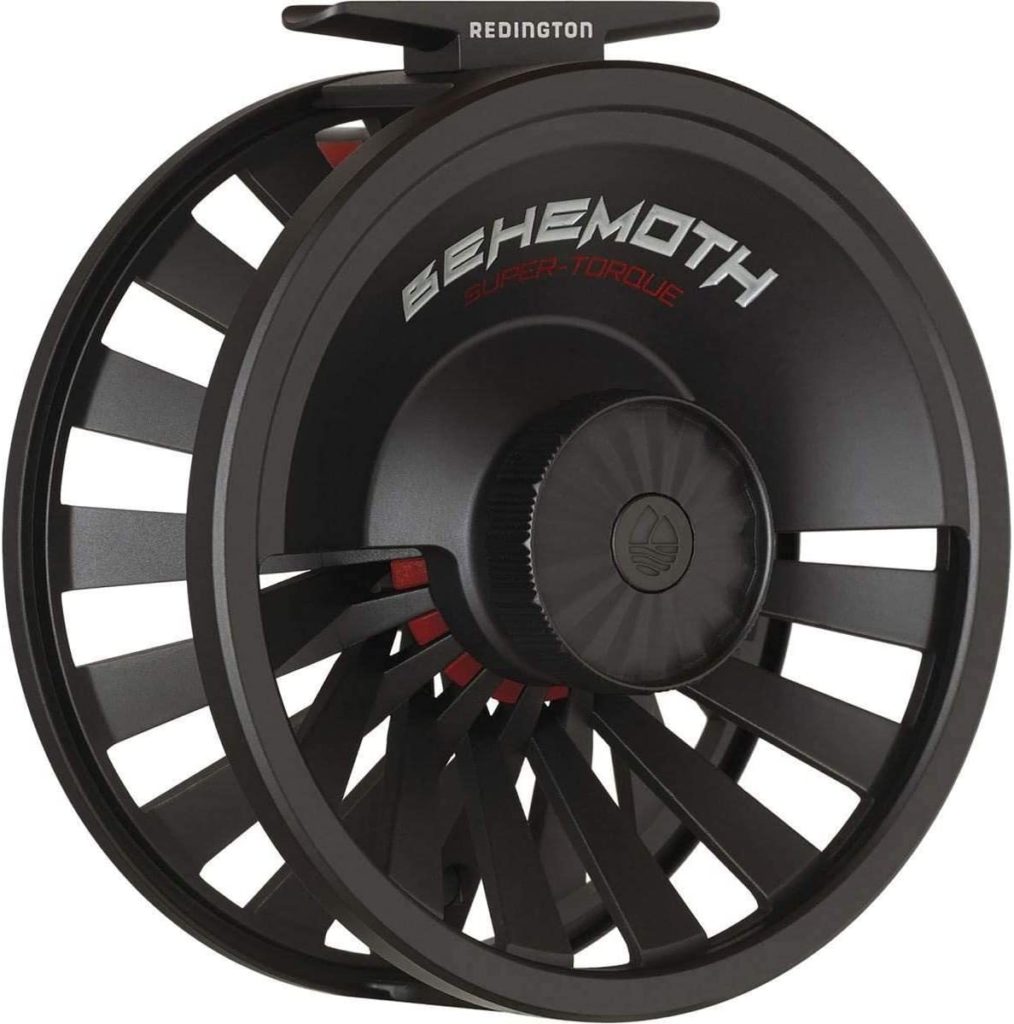When I’m putting together a new fly fishing outfit such as a fly fishing vest and fly fishing boots, one of my most critical decisions is choosing a reel for my setup. My selection process all starts with taking into account what species I’ll be going after.
For small spring creek trout fishing, I like my reels to be light and well balanced with my rod. Therefore, I don’t worry too much about drag as these wary little fish can usually be brought to the net by stripping line.
However, when it comes to salmon, steelhead, and bass, things get more complicated. These are aggressive sport fish that fight like hell, and I never want to be overmatched or outgunned in the moment of truth.
In this case, I want a fly fishing reel with a large arbor and a drag system that packs enough punch to handle five to ten-pound fish digging in strong currents.
What follows is a rundown of some of the best fly fishing reels, along with a deep dive into the pros and cons of each one to help you decide which reel is suitable for you and your style of fishing.
Best All-Around Fly Fishing Reel
You just can’t go wrong with this workhorse. Performance and value all in one. Get yourself a couple of them. You won’t be sorry.
Check Today's PriceSizes: I (1-3 Wt.). II (3-5 Wt.), III (5-7 Wt.). IV (7-9 Wt.)
Drag system: Click-and-pawl
Weight: 5.6 oz
Arbor: Standard
Materials: Aluminum
The Orvis Battenkill fly reel has been around for years and remains one of my favorite fly fishing reels of all time. It has a simple design and an old-style click-and-pawl style drag that harkens back to the traditional origins of dry fly trout fishing.
Simply put, this reel is a classic. Very little has changed with the reel design since it was first introduced in the 1960s aside from some modernized aesthetics. The reel is a perfect mix of the old and new.
The zipping sound of the drag when pulling line from the spool is enough to bring back memories of the hundreds of fish I’ve caught using these reels. These reels last forever, and their modest price point makes it easy on the wallet to own a few of them.
I can’t recommend these reels enough whether you are new to fly fishing or a veteran fly angler. They are just about the perfect fly fishing reel.
Best Performing Fly Fishing Reel
My fly fishing reel of choice for fall-run Lake Ontario tributary Salmon, Steelhead, and Brown trout. Lamson makes reliable, ultra-durable reels that flat-out perform.
Check Today's PriceSize: 3+ (2-4 Wt.), 5+ (4-6 Wt.), 7+ (6-8 Wt.) 9+ (8-10 Wt.)
Drag system: Sealed conical disc
Weight: 7.65 oz
Arbor: Large
Materials: Aluminum
I’m a big fan of Lamson-Waterworks reels. I own at least three of them at any given time. One of these three has been in service for over ten years.
The Liquid is currently on my Steelhead setup. I’ve dropped these reels and dunked them in freezing cold water when landing fish in the winter, and they continue to perform. The sealed drag is silky smooth on startup and highly adjustable. The drag system keeps water from getting to the bearing and keeps sand and other grit like zebra muscle fragments from the reel’s guts.
The large arbor gives you plenty of stopping power in both drag and retrieval. The liquid far outperforms its price point and is made to last. If you’re going after fish anywhere from five to fifteen pounds, this reel will do the job and do it for years to come.
Best Value Fly Fishing Reel
This reel gives the best bang for your buck and amazingly comes loaded with line and backing at an incredibly low price point.
Check Today's PriceSize: 2-3, 4-5, 6-7, 8-9
Drag system: Disc
Weight: 3.21 oz
Arbor: Large
Materials: Aluminum
The Maxcatch Eco large arbor fly reel is an incredible value considering everything you get for an almost unheard-of low price. I’ve only had this reel for a short time, but I was pleasantly surprised at how good it is.
I initially figured I would use this reel solely as a backup; however, I have ended up getting a ton of use out of it already.
The reel boasts a choice of five different and attractive finishes, including black, silver, brook trout, brown trout, and rainbow trout. I went with the rainbow trout finish and couldn’t be happier.
I love fishing with light gear and paired the 2-3 sized reel with a 2 Wt. glass rod also by Maxcatch. It’s a fun setup and was exactly what I was looking for.
If you want to get a nice smooth reel for very little money, this one’s a great choice. Just be ready to use it as your primary reel instead of your backup.
Best Mid-Range Fly Fishing Reel
Orvis has put the drag system of their more expensive reels into a more affordable body and spool. Another entry on our list that outperforms its price.
Check Today's PriceSize: II (4-6 Wt.) IV (7-9)
Drag system: Disc
Weight: 8.32 oz
Arbor: Large
Materials: Composite molded
The Orvis Clearwater line of products is meant to be a high-performing entry-level option for anglers who want performance without paying for high-end cosmetic features.
The reel looks pretty plain, but you quickly forget about that with a fish on. The business end of the reel is the Orvis top-of-the-line drag system and getting that on an entry-level reel makes this one a no-brainer.
There is an option to get this professionally pre-spooled with backing and line for a few extra dollars, which is an excellent option. This is another reel that I would be comfortable fighting larger fish with, especially in the 7-9 reel sizes.
Best Small Stream Fly Fishing Reel
The Redington ZERO is a super lightweight reel for the fly angler that values simplicity.
Check Today's PriceSize: 2-3, 4-5
Drag system: Click-and-pawl
Weight: 5.6 oz
Arbor: Large
Materials: Plastic
The Redington ZERO is a no-nonsense reel that keeps things simple. It is the second reel on our list to feature a click-and-pawl drag system.
The reel is available in three different colors and up to a five-weight line size. The sizing options for this reel make it perfect for small trout and panfish, especially for anglers that appreciate a minimalistic approach.
This is a nice light reel at an affordable price. I would avoid this one if you’re planning on chasing any fish over five pounds.
Best Saltwater Fly Fishing Reel
This Reel has the extra line capacity needed to hold plenty of backing for saltwater species that tend to try to spool you. The Drag is fully capable of standing up to harsh saltwater sportfish as well. For Saltwater, I would recommend this reel in the 11-12 Wt. size.
Check Today's PriceSize: 4-5, 5-6, 7-8, 9-10, 11-12
Drag system: Disc
Weight: 8 oz
Arbor: Large
Materials: Carbon
Saltwater fly fishing is a different animal when compared to other styles of fly angling. You’re going to want a dedicated saltwater setup that you know will be exposed to corrosive elements.
With that in mind, I do not want to break the bank on equipment that will be asked to deal with the problems associated with saltwater fishing. This reel is a nice mix of performance and affordability.
I get the functionality without the constant worry of damaging a more expensive reel. The drag and line capacity of the size 11-12 reel works great in a saltwater application.
What are some features to look for in a fly fishing reel?
Whether you’re new to fly fishing or a seasoned veteran, the first thing to think about when purchasing a new rod or reel will be what species you are targeting. The species you are fishing for will determine every decision you make when putting together a new fly fishing outfit.
Fly fishing equipment is highly dependent on the line Wt. designation that you match to the type of fishing you’ll be doing.
The most common line weights go from a 2 Wt. up through 12 Wt. For simplicity’s sake, the smaller the fish, the lower the weight of fly line, reel, and rod, and vice versa.
As an avid inland dry fly fisherman, I often use either a 3 Wt., 4 Wt., or 5 Wt. These fly fishing combinations will usually handle fish up to 5 lbs, with no problem.
In the fall, when I switch to targeting larger lake-run salmon, steelhead, and brown trout, my setup is typically a 7 Wt. or 8 Wt. rod, reel, and line configuration. In this application, we are looking at fish that fight a bit harder, require the reel to do more work, and fall in the 6 lb. to 10 lb category.
Saltwater fly fishing requires even more heavy-duty equipment, and these rods and reels will be more along the lines of a 10 Wt. or 11 Wt.
It all starts with choosing your fish species and then selecting the matching rod, reel, and line combination that best fits the size and power of your desired type of fishing.
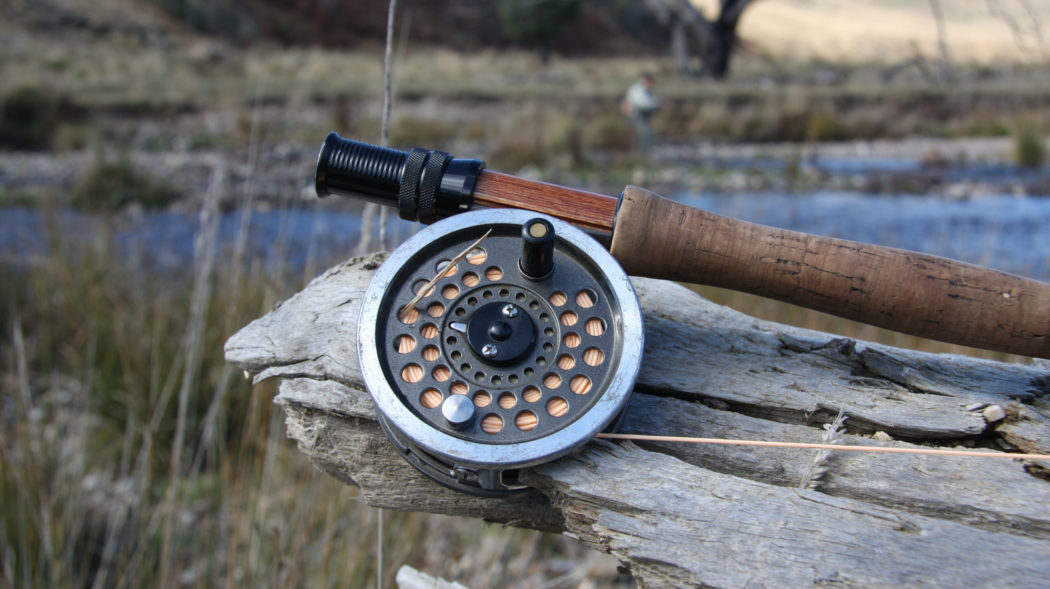
What size reels work best for fly fishing?
As noted in the section above, once you have your species of fish locked down, you’ll choose the reel size that matches the appropriate line weight for that fish.
For example, with my favorite dry fly trout fishing setup, I fish a 4 Wt. rod, with a standard arbor 4 Wt. reel and a 4 Wt. floating fly line. This is delicate fishing to smaller fish where I don’t worry much about drag or retrieval power.
Alternatively, for bass, I typically use a 6 Wt. fly rod with a large arbor 6 Wt. reel that has more drag capabilities. I pair these with a 6 Wt. floating line to work topwater flies to stronger fish. But, again, I want a drag system on my bass fishing reel that can deal with fish more likely to run a few times before landing.
What’s the difference between standard and large arbor reels?
The arbor of a fly reel refers to the diameter of the spool that your fly line and backing are attached to. A large arbor reel is typically wider and not as deep as a standard arbor reel, allowing you to hold more line and create more retrieval power on each crank of the handle.
I use a standard arbor reel for lighter and more delicate trout and pan fishing. However, I will almost always choose a large arbor reel if I know I will be running into larger and stronger fish like bass, salmon, steelhead, or saltwater species.
Of course, there are dry fly fishing situations where I will choose a large arbor reel if I know I will be on water where trout in the 20 in. plus categories are commonplace.
What are the different types of drag systems found in fly fishing reels?
The drag on fly fishing reels usually falls within one of two different types. Most reels on the market have either an old-style click-and-pawl system or the more modern disc drag type design.
A click-and-pawl drag functions with spring tensioning on a gear within the reel. Increased tension on the spring results in more resistance to fighting fish. This system is older, perhaps less powerful, yet classic and still enjoyable to fish.
The disc drag design utilizes a series of washers that compress on an internal disc to create tension and fish-stopping power. This type of drag is very smooth to start while also providing ease of adjustability and a great deal of power.
Disc drag reels can also be sealed to prevent water and debris from getting to the critical working parts of your reel, making this type of drag system ideal in inclement weather and rough fishing conditions.
These types of reels each have their place and can be a blast to fish with for different reasons. I’d recommend taking the time to learn which fits your fishing style best.
How to choose the best fly fishing reel
Now that you know about the different reel sizes and the two different types of fly reel drag systems, there are a few other essential factors to think about when purchasing a fly fishing reel.
Materials
Fly fishing reels are usually offered in either machined aluminum or molded carbon plastic.
The aluminum reels are more pleasing to the eye and likely more durable; however, they usually carry a much larger price tag.
Molded carbon plastic reels have come a long way over the years. They are now much stronger than in the past and can put up with more of a beating on the water than ever before.
In addition, many companies have also started putting their high-end reel drag components in their more cost-friendly molded plastic models resulting in a well-performing yet less expensive option for the consumer.
Also, keep in mind that you need to lubricate your reels using gun oil or other lubricants.
Weight
When it comes to the weight of a fly fishing reel, I typically like to go as light as possible. However, how well your reel balances with your fly rod is more important than the reel’s overall weight alone. I recommend that anglers bring their rod into a fly shop to try the reel on the rod whenever possible.
Alternatively, with the increased practice of buying fly fishing equipment online, I would suggest calling the rod/reel manufacturer or retailer to speak with a knowledgeable pro about what rod and reel combinations work the best.
Line Capacity
A reels line capacity becomes essential when you expect to be going after fish that are strong enough to pull a lot of line. There’s nothing worse than having to break off a big fish on a run because you’re afraid of getting spooled.
Avoid this by planning ahead and selecting a reel size that allows extra backing and more powerful drag.
Drag
There are situations in fly fishing where drag does not come into play all that much. When fishing for smaller, lighter fish, you can rely on simply stripping line or palming the reel to slow down and land your catch.
On the other hand, if fishing for larger fish is your game, you’re going to want to go with a disc drag reel that has more stopping power.
Conclusion
That ought to do it for our rundown of some of the best fly fishing reels that I’ve tested out. While there are a ton of fancier and more expensive fly fishing reels out there, I’ve made an effort to compile a list of reels that are modestly priced yet still meet the demands of heavy use.
Take into account all the areas we discussed here, and you should find yourself with a quality fly fishing reel that will provide years of enjoyment on the water.
Fish on!
As an Amazon Associate, Fishermen's Angle earns from qualifying purchases. We get commissions for purchases made through links in this post.
